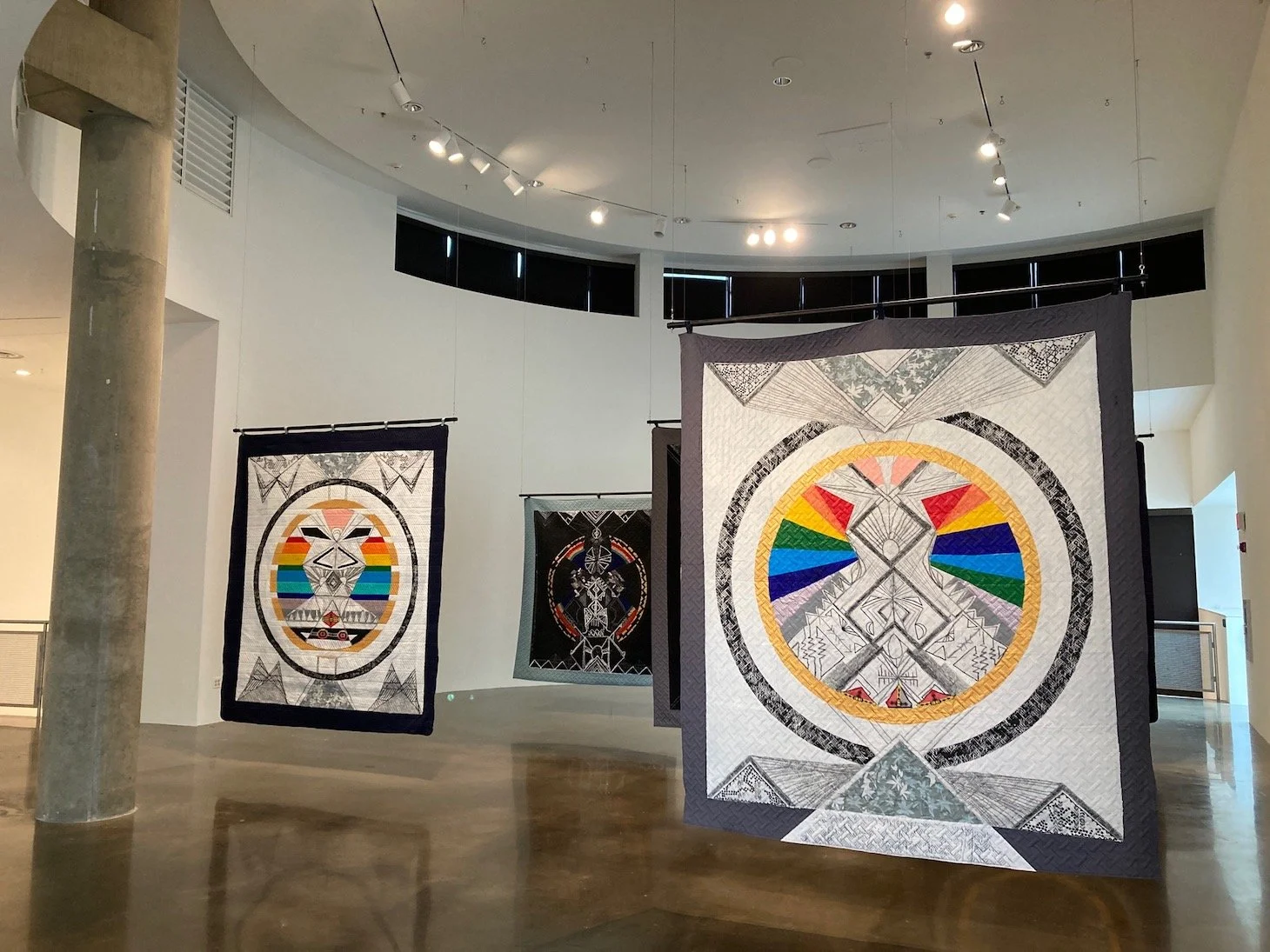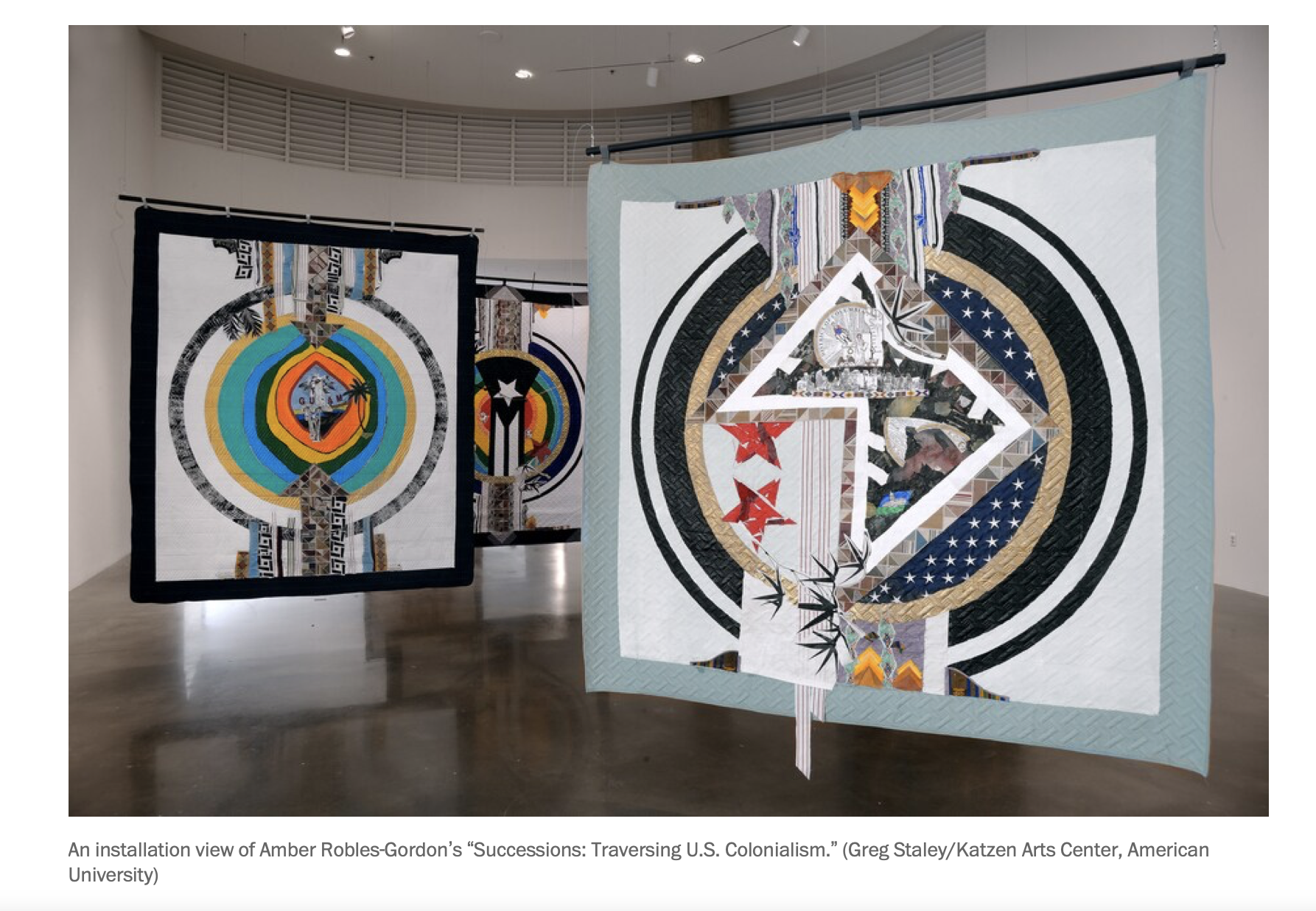Womanhood and femininity finds itself in every corner of life. Church pews, miniature gardens and passed-down accessories— artists Lavett Ballard, Amber Robles-Gordon and Evita Tezeno bring Black womanhood and female friendships to the canvas through their exhibition, “Solace and Sisterhood,” at the University of Maryland’s David C. Driskell Center.
D.C.-based artist Amber Robles–Gordon has created assemblages that cover swaths of the walls and floor, forming symmetrical arrangements of original paintings and objects along with bric-a-brac that could have been pulled right out of granny’s house. Among these talismans are coasters, sticks wrapped with rainbow thread, embroidery samplers, vividly painted wood planks, and live plants in glass cubes of water.
Through their pieces, the artists reflect on shared experiences, understanding and a supportive bond that fosters resilience. They examine a sense of sisterhood within the Black community, which transcends individual stories and shared experiences, creating a space for solace.
Jamiyah Bonds, a sophomore government and politics major, said she always enjoys seeing other people’s world experiences through art.
Solace and Sisterhood, The Driskell Center’s fall semester exhibit, amplifies the resilience and bond of Black sisterhood through the varying perspectives of three prominent female artists.
The exhibit, which is on view until Dec. 5, aims to encompass a diverse range of relationships between women, from biological relationships to friendships. It showcases the impact sisterhood has on these relationships and examines the solace and understanding Black women in these relationships receive, according to a press release by The Driskell Center.
"These amazing and accomplished thinkers will be engaging in a discussion about the impressive visual presentation and critical investigations present Amber’s current exhibition on view at our gallery: soveREIGNty: Acts, Forms, & Measures of Protest & Resistance."
Tinney Contemporary will be sticking with its June show through July 9. I reviewed Amber Robles-Gordon’s Sovereignty exhibition for the Scene — it’s a prime example of how artists can incorporate political and social content into a body of work while also making art that’s formally striking. We’ve seen lots of messaging about social and political issues in the contemporary art of the 21st century. However, much of that work will never be remembered or reconsidered — timely art is rarely timeless. Robles-Gordon’s work is visually successful irrespective of its critiques of the U.S. policy toward — and governance of — its populated territories and the District of Columbia. I’ve seen powerful political art and dim political art, and I often question whether visual art is an effective medium for political messages. But the work in Sovereignty is formally distinctive. Tinney Contemporary will be open this Saturday from 2 to 8 p.m.
Washington, DC — Seven “flags” hang in Amber Robles-Gordon’s show at the American University Museum: one for each of the five unincorporated United States territories in the Caribbean, one for the District of Columbia, and one to signify the artist’s place in between those locales.
People, food, and horticulture are among the things that move. Amber Robles-Gordon’s use of the Ficus Elastica is part of the symbology that reverberates throughout her exhibition, Successions: Traversing US Colonialism, on view at the American University Museum at the Katzen Arts Center in Washington, DC, through December 12, 2021. The Ficus Elastica—colloquially known as the rubber tree—has its roots in South Asia, though it was later nativized in the West Indies through the rubber trade. Dear reader, among your houseplants you are likely to find the genus of the rubber plant.









Even the title of Amber Robles-Gordon’s Tinney Contemporary exhibition — SoveREIGNty: Acts, Forms, and Measures of Protest and Resistance — expresses an activist message. And it’s emblematic of a display of large-scale, mixed-media quilts brimming with signals and symbolism interrogating U.S. policy toward — and governance of — its populated territories and the District of Columbia.